Atelier E.B explores the history of window dressing in a new Serpentine show
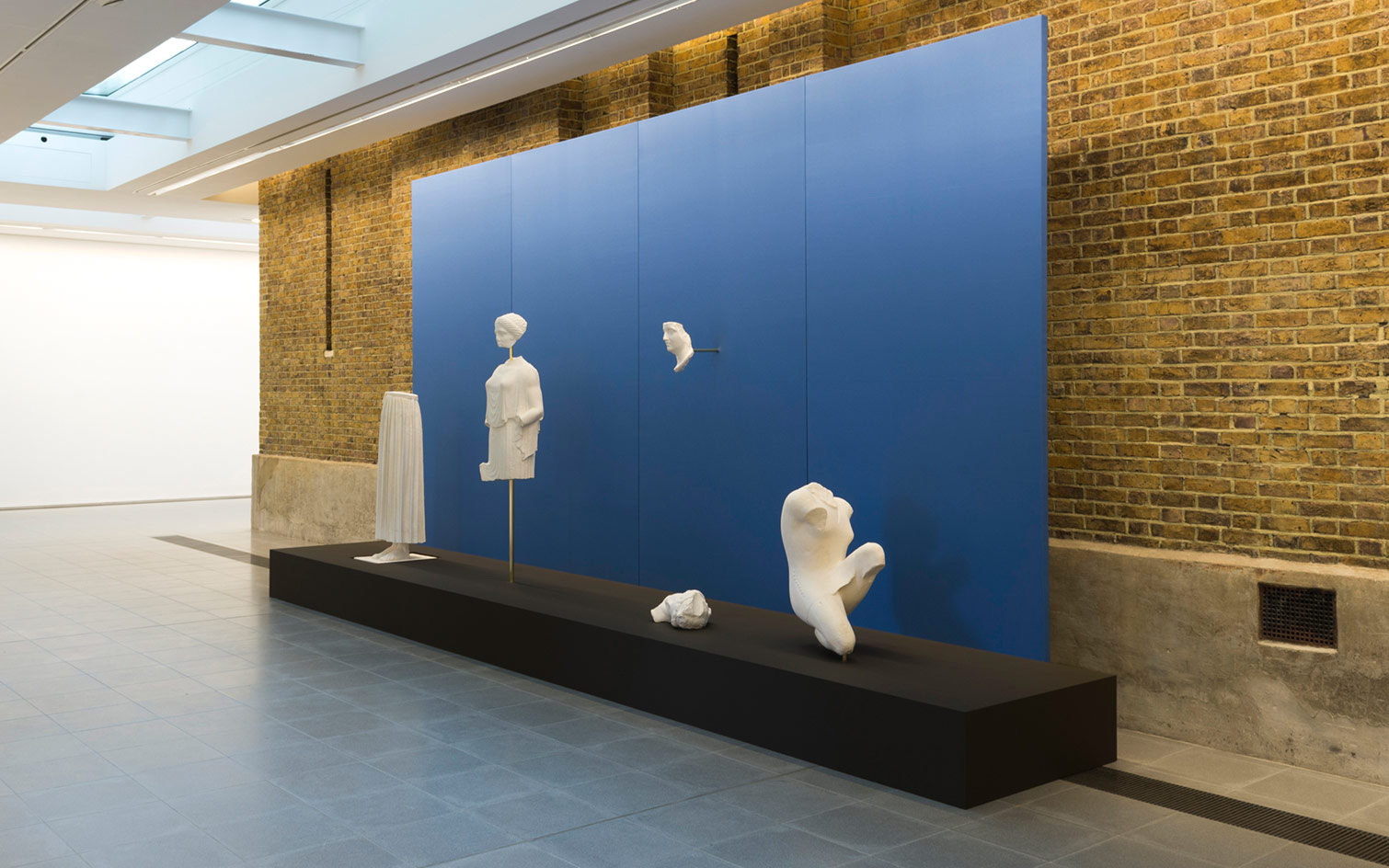
Fashion week – in fact a continent-crossing month long whirlwind of fanciful fashion shows and runway set spectacles – is over for another season. And with its end, questions crop up regarding the relevance of the fashion show in today’s digital and environmentally aware world, and the suitability of a special effect-fuelled extravaganzas, where clothing is viewed not from up close, but a distance. The concept of how fashion is presented to the consumer – be it a runway show, a museum exhibition, or a merchandised window display – is a visual narrative which has fascinated label Atelier E.B, since it was founded by Scottish designer Beca Lipscombe and artist Lucy McKenzie in 2007.
‘We find it problematic to show our clothes,’ says Lipscombe of Atelier E.B’s designs, which explore the relaxed realms of casualwear and sportswear. ‘They aren’t spectacular, but very wearable. We’ve tried them on mannequins, we’ve toured with showrooms, and we’ve researched how people have presented garments in the past’.
This extensive investigation has culminated in ‘Atelier E.B: Passer-By’, a new three-part exhibition at the Serpentine Sackler Gallery in London, which explores the history of fashion display, from the cultural heritage and artistic evolution of the mannequin, to the enchanting and dying art of window dressing.
‘The exhibition title invokes the idea of window shopping, and the concept of passing through time,’ says curator Melissa Blanchflower of the show. The exhibition is also the first Serpentine show to be fully dedicated to fashion. The first section offers a well-heeled walk through the history of mannequin design and window trimming, and features rooms and vitrines bursting with artworks and installations, film and rare archival material.
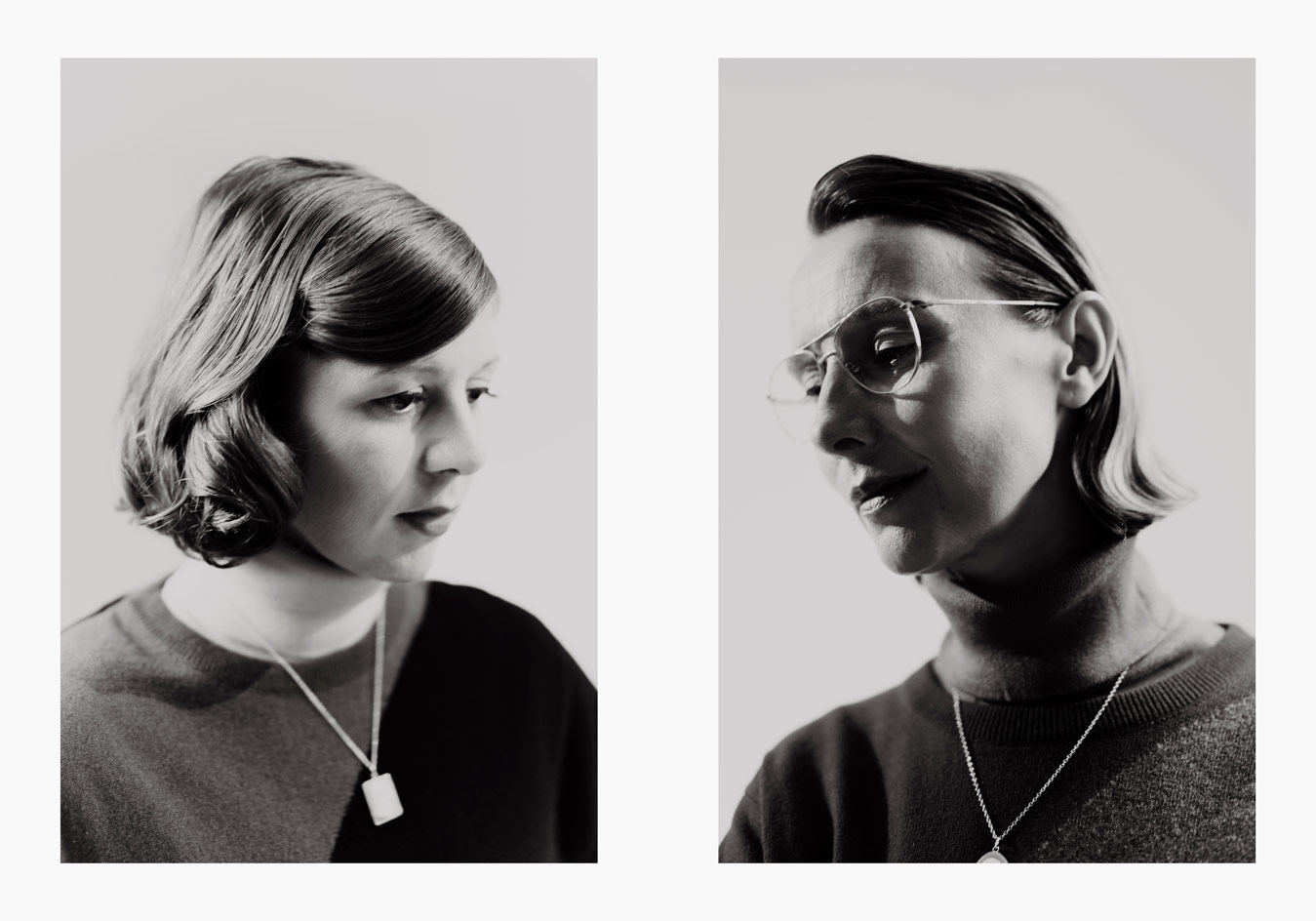
Artist Lucy McKenzie and designer Beca Lipscombe, of Atelier E.B wearing the 2018 Jasperwear collection.
Mannequin design is considered in terms of socio-political contexts including modernism, the world fairs of the 1930s and the rise of fascism, and encourages discussion of the changing shape of the desired female body over time. A 2014 reproduction of a 1955 plaster mannequin created by Charles James reflects the body type the couturier preferred to toile his designs on, while a 1923 lacquered silver sculpture by Rudolf Belling represents the streamlined and machine age-inspired athletic figure idealised during the industrialising 1920s. Pivotal figures in the art of window dressing are also celebrated, from Gene Moore who created miniature mis-en-scene for Tiffany & Co in the 1950s, to Natasha Kroll, the production designer who trimmed windows for Simpsons of Piccadilly during the 1940s.
‘I’m fascinated with the idea of mannequins as art objects,’ says McKenzie. This intrigue extends into the second element of exhibition, which culminates in a series of works by seven contemporary artists including Elizabeth Radcliffe, Anna Blessmann and Markus Selg, which uses mannequins or display devices to present pieces from Atelier E.B’s previous collections.
Radcliffe’s intricately handwoven tapestry of artist Marc Camille Chaimowicz from 2017 (whose work also features in the show), is reconfigured from a portrait into a presentation device, modelling a brooch design by the brand. A silicone cast of Blessmann’s hands holding a silk camisole and pencil skirt sits below a coil of metal covered with fluffy blue fur, a spiral which evokes both a scarf and a hanging device, and Selg’s Fractal Abyss (2008), a figurative interpretation of a classic sculpture is reimagined as a mannequin wearing a knitted jumper.
The work of Steff Norwood is not only featured in the second stage of the exhibition, but he is also the mastermind behind the design of its third stage. Here, Atelier E.B’s latest ‘Jasperwear' collection – one featuring tracksuits and merino knitwear, decorated with signs of the zodiac and gladiator’s helmets – is presented inside a Norwood-created shop window. The pieces are folded and pinned in a display created by renowned window trimmer Howard Tong.
‘It’s the perfect way to show our clothes,’ Lipscombe says. Museum goers also have the chance to see the collection up close and purchase or order the brand’s caps, knits and sportswear in a showroom open at the weekends. ‘Clothes are so interesting in their tiny details,’ Mackenzie says. Lipscombe agrees. ‘We like wearable clothing. It’s the underdog… How we choose to present it comes from our shared experience.’
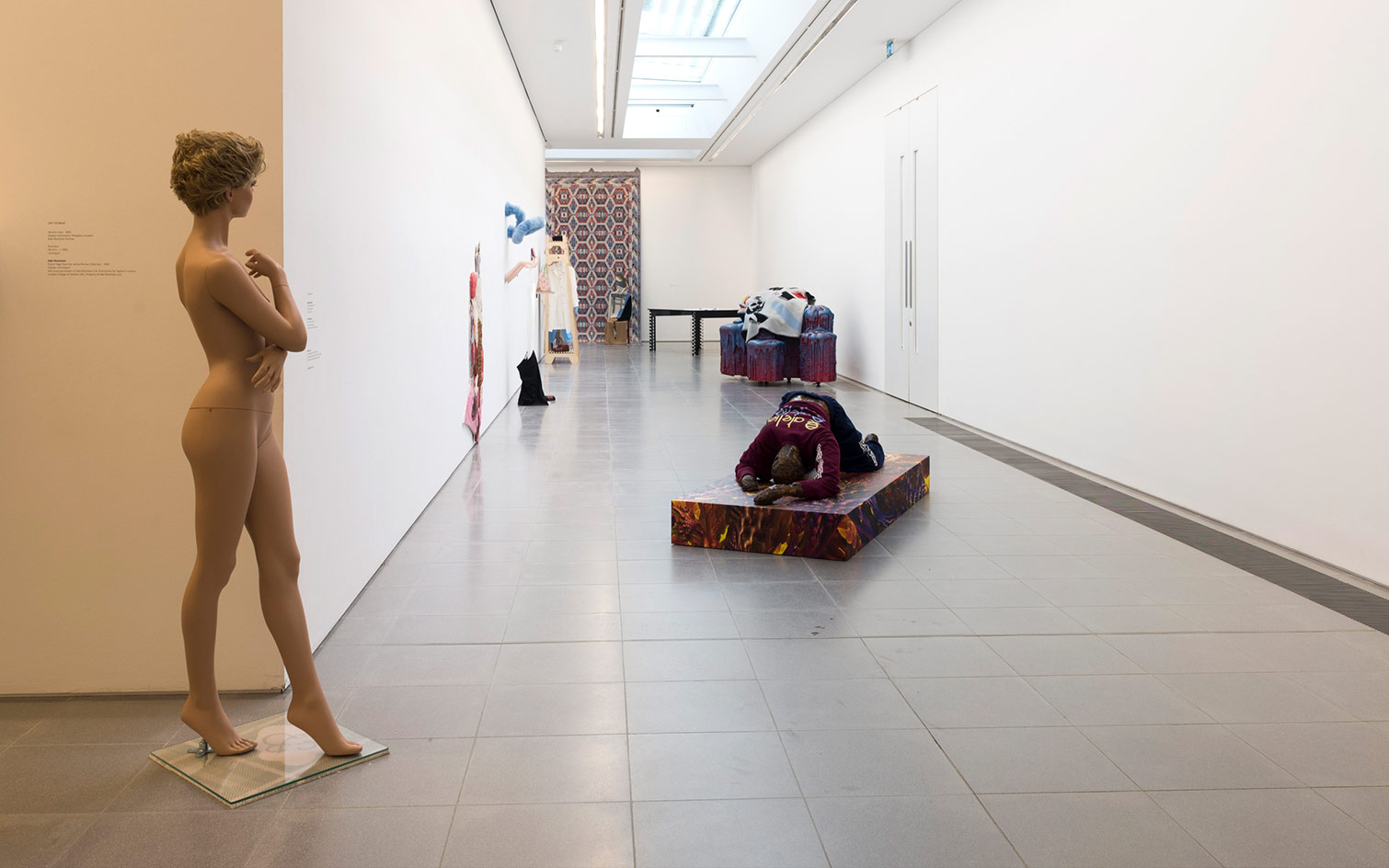
'Atelier E.B: Passer-By' installation view. Photography: Courtesy of readsreads.info
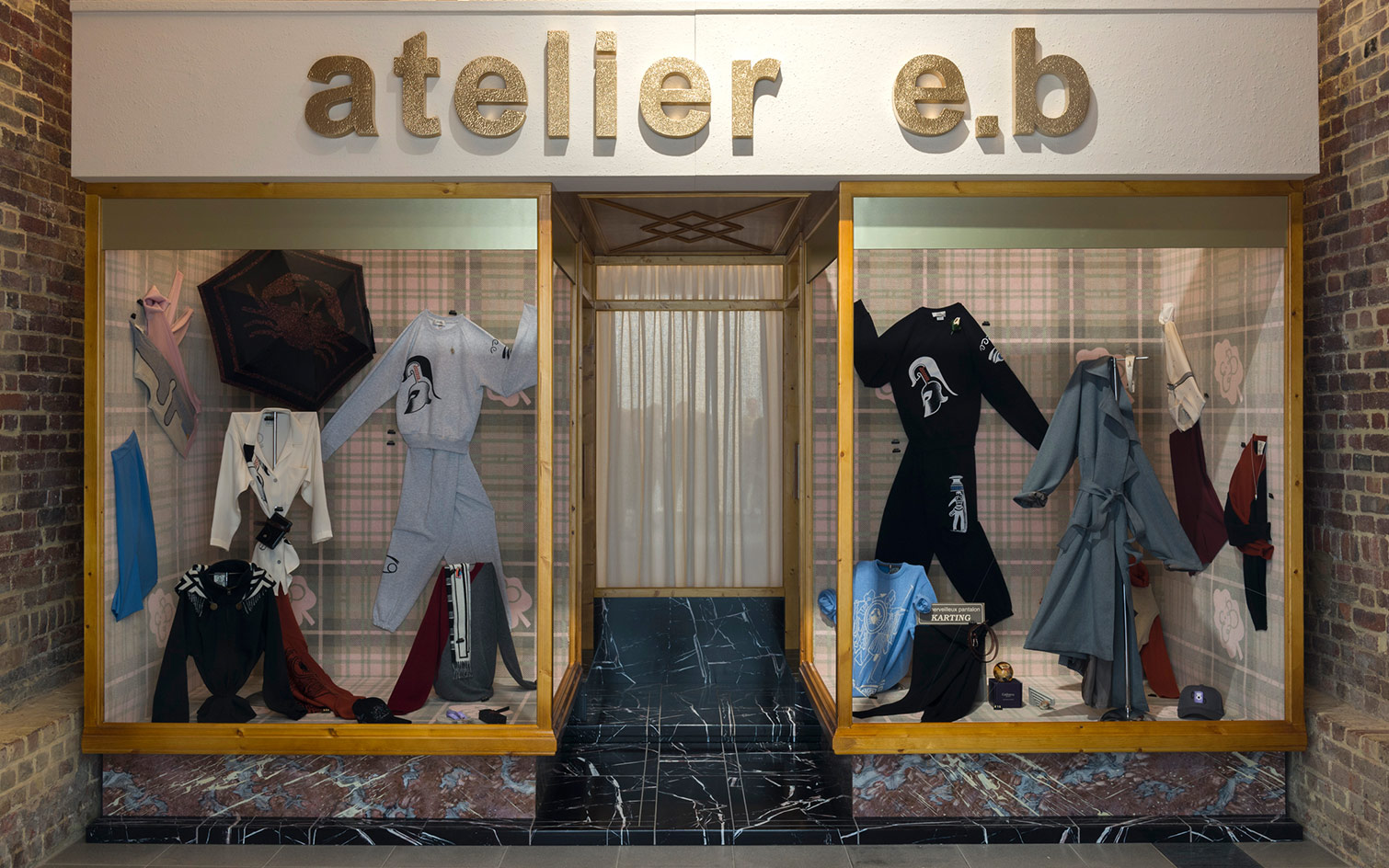
'Atelier E.B: Passer-By' installation view. Photography: Courtesy of readsreads.info
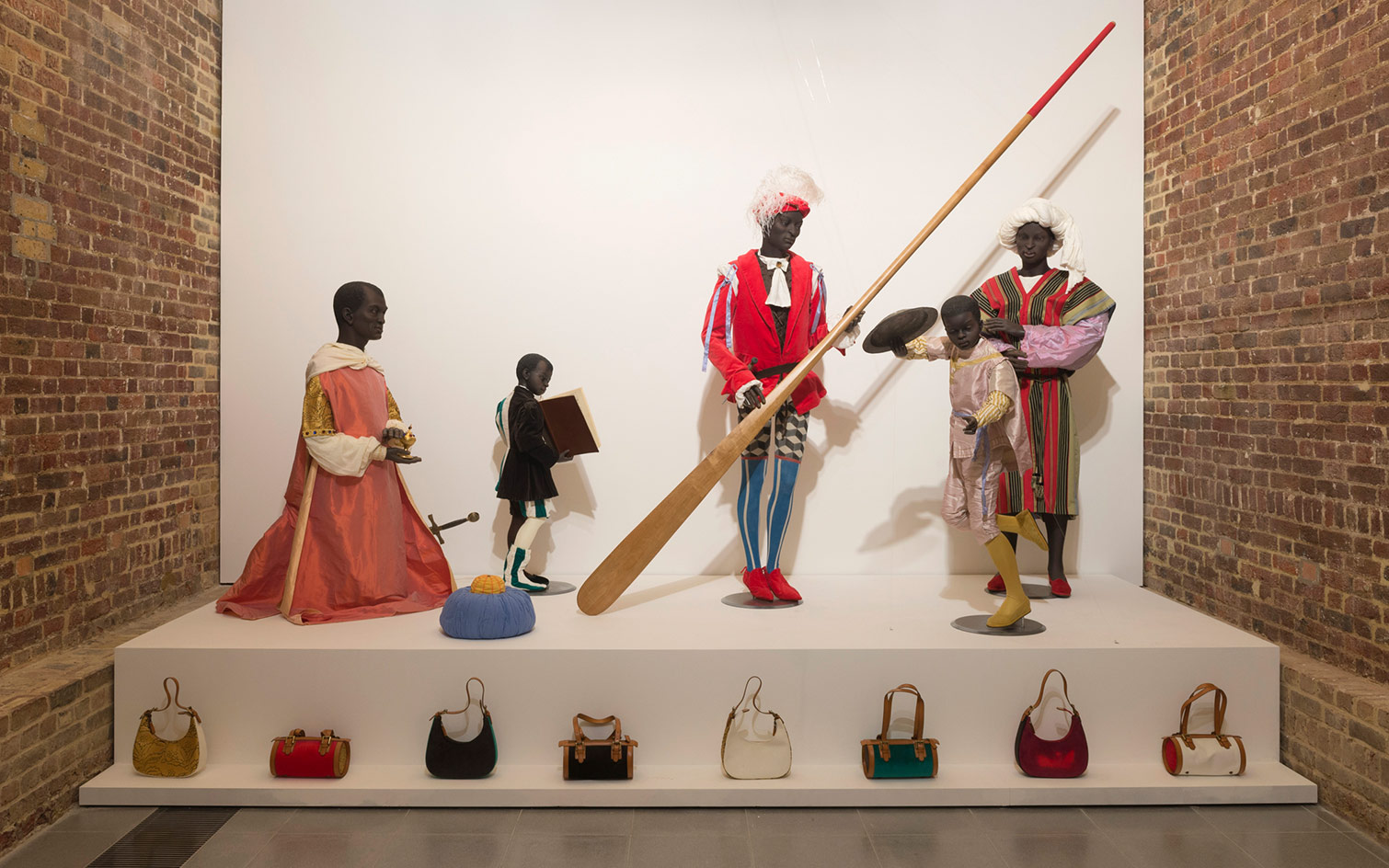
'Atelier E.B: Passer-By' installation view. Photography: Courtesy of readsreads.info
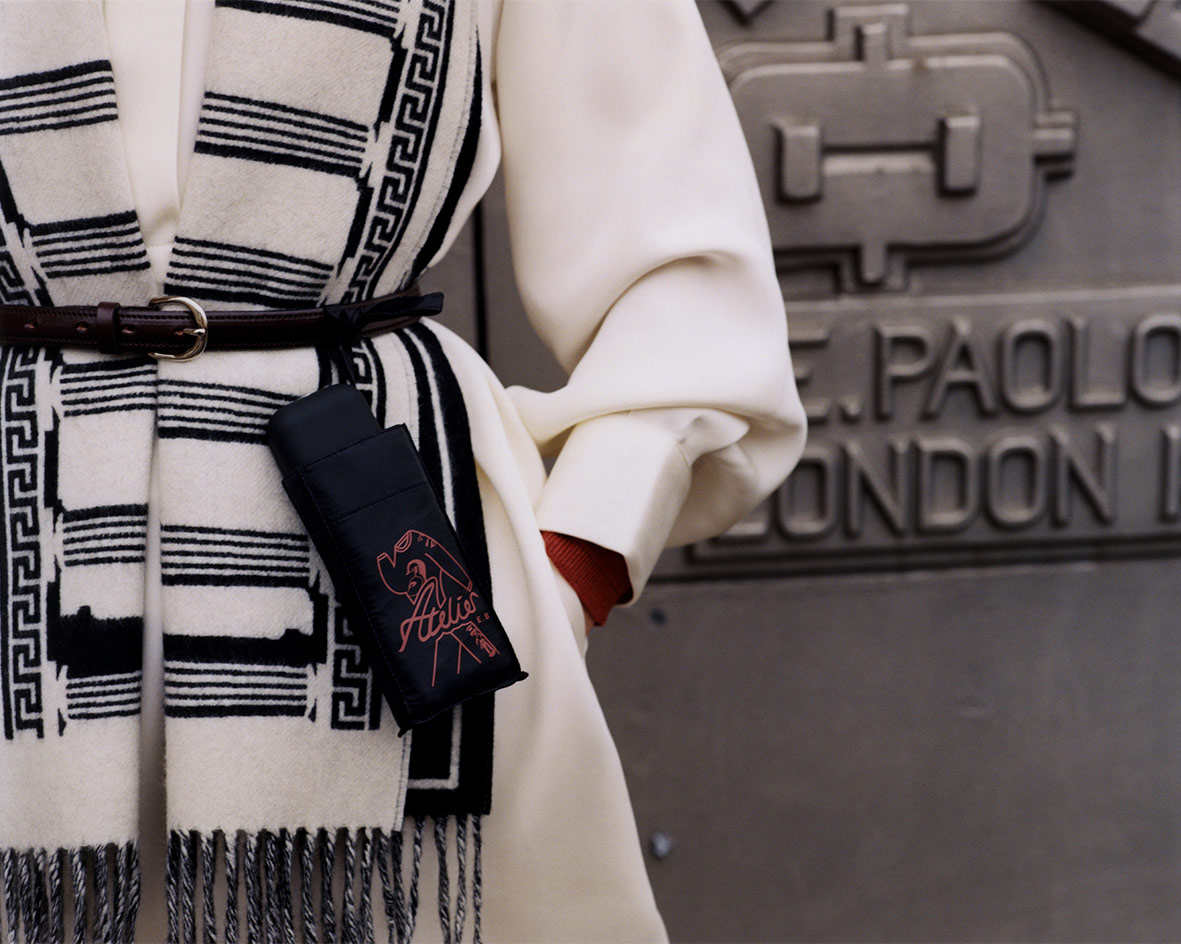
'Mary' silk thobe,'Blair' trousers and 'Polo' neck in silk cashmere, 'Disgrace' scarf, 'Bernie' leather belt and 'Aquascutum’ umbrella, from the Jasperwear collection.
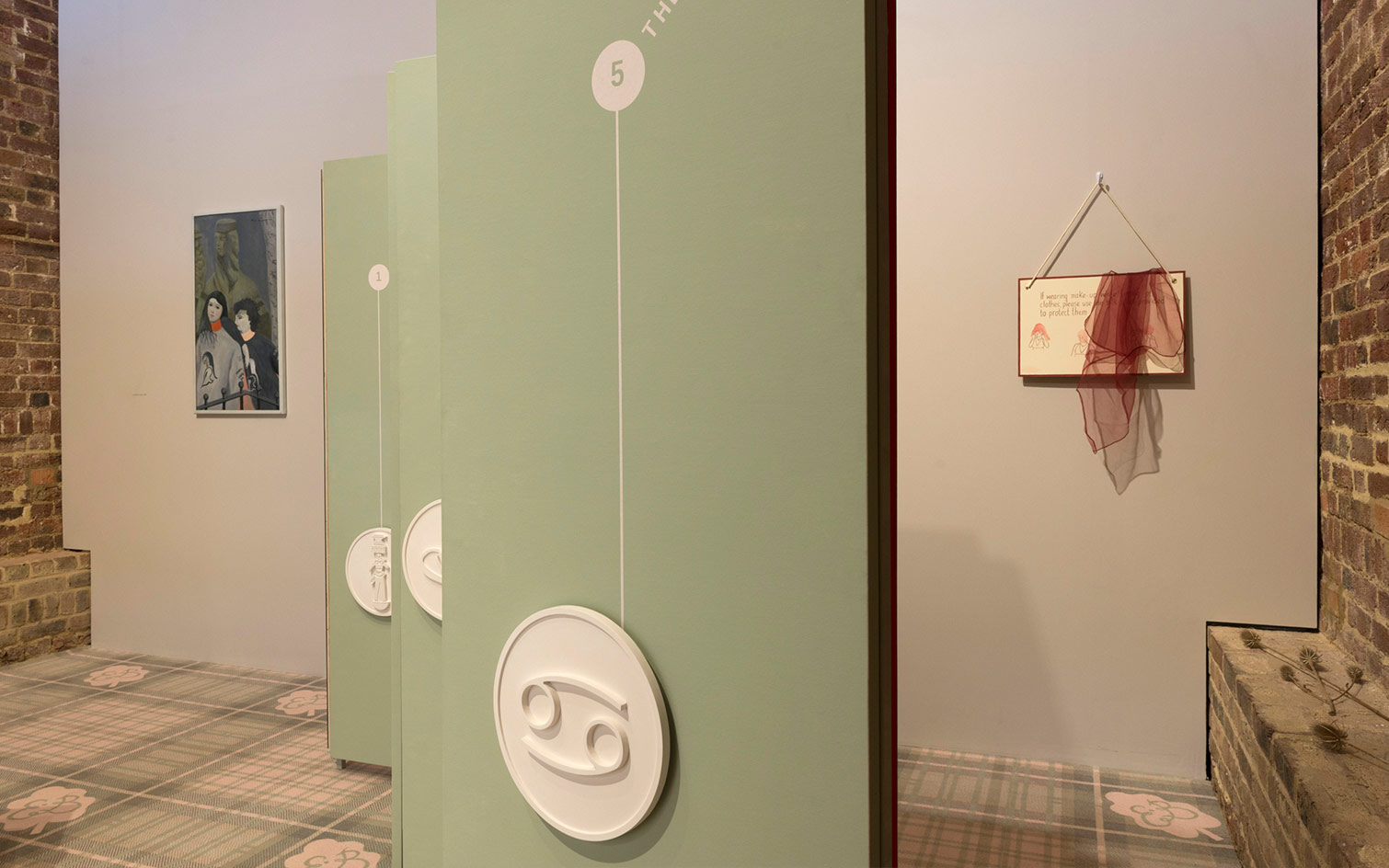
'Atelier E.B: Passer-By' installation view. Photography: Courtesy of readsreads.info
INFORMATION
The ‘Atelier E.B: Passer-by’ exhibition is on view at the Serpentine Sackler Gallery until 6 January. For more information, visit the Serpentine Galleries website and the Atelier E.B website
ADDRESS
Serpentine Sackler Gallery
West Carriage Drive
London
W2 2AR
Wallpaper* Newsletter
Receive our daily digest of inspiration, escapism and design stories from around the world direct to your inbox.
-
 All-In is the Paris-based label making full-force fashion for main character dressing
All-In is the Paris-based label making full-force fashion for main character dressingPart of our monthly Uprising series, Wallpaper* meets Benjamin Barron and Bror August Vestbø of All-In, the LVMH Prize-nominated label which bases its collections on a riotous cast of characters – real and imagined
By Orla Brennan
-
 Maserati joins forces with Giorgetti for a turbo-charged relationship
Maserati joins forces with Giorgetti for a turbo-charged relationshipAnnouncing their marriage during Milan Design Week, the brands unveiled a collection, a car and a long term commitment
By Hugo Macdonald
-
 Through an innovative new training program, Poltrona Frau aims to safeguard Italian craft
Through an innovative new training program, Poltrona Frau aims to safeguard Italian craftThe heritage furniture manufacturer is training a new generation of leather artisans
By Cristina Kiran Piotti
-
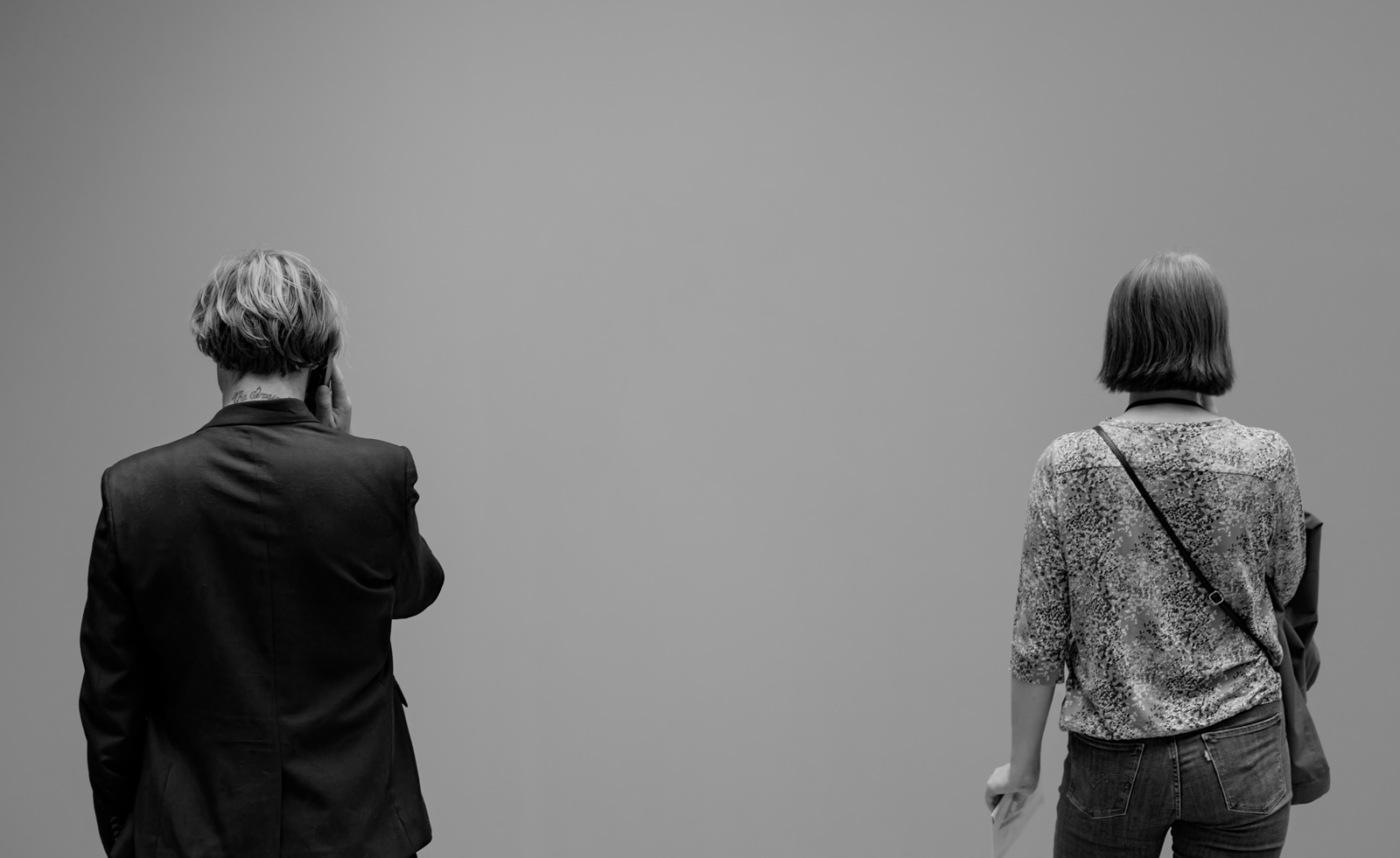 Looking at people looking at art: inside the mind of a gallery attendant
Looking at people looking at art: inside the mind of a gallery attendantVisitor experience workers at London’s Tate Modern, Serpentine, Barbican and V&A share what it’s like to watch people looking at art during a time of changing attention spans and rising vandalism
By Kyle MacNeill
-
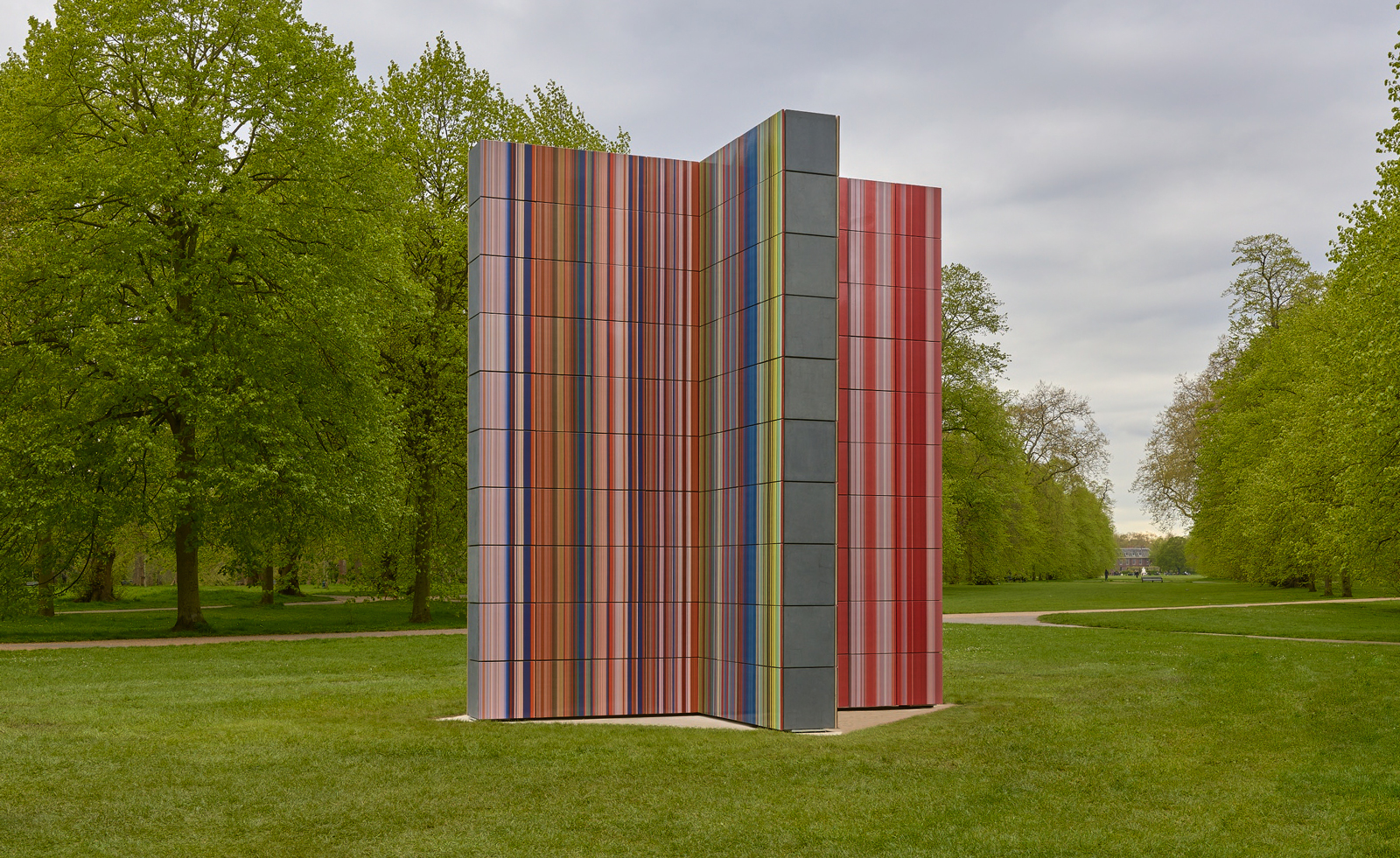 Gerhard Richter unveils new sculpture at Serpentine South
Gerhard Richter unveils new sculpture at Serpentine SouthGerhard Richter revisits themes of pattern and repetition in ‘Strip-Tower’ at London’s Serpentine South
By Hannah Silver
-
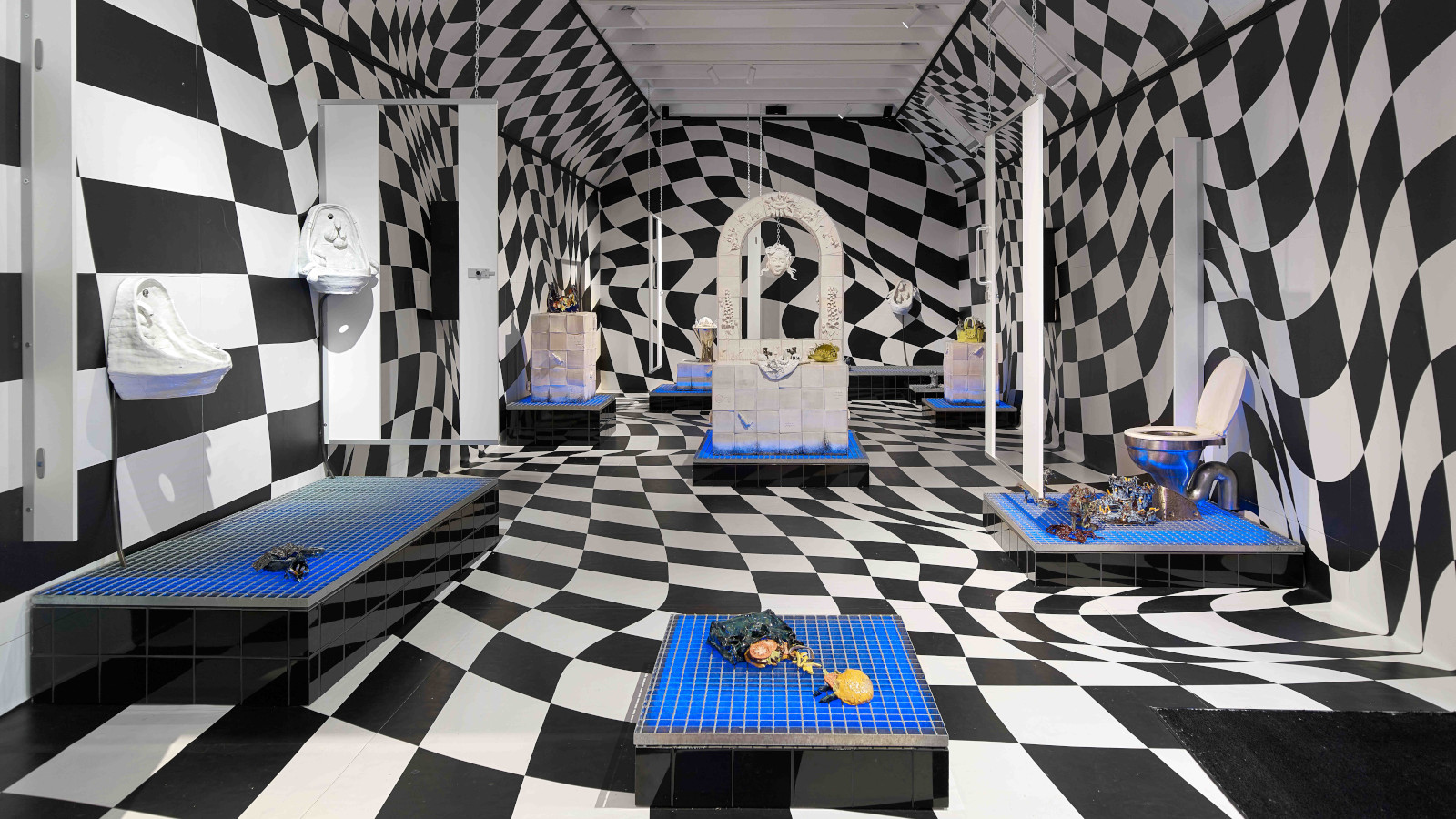 Edinburgh Art Festival 2023: from bog dancing to binge drinking
Edinburgh Art Festival 2023: from bog dancing to binge drinkingWhat to see at Edinburgh Art Festival 2023, championing women and queer artists, whether exploring Scottish bogland on film or casting hedonism in ceramic
By Amah-Rose Abrams
-
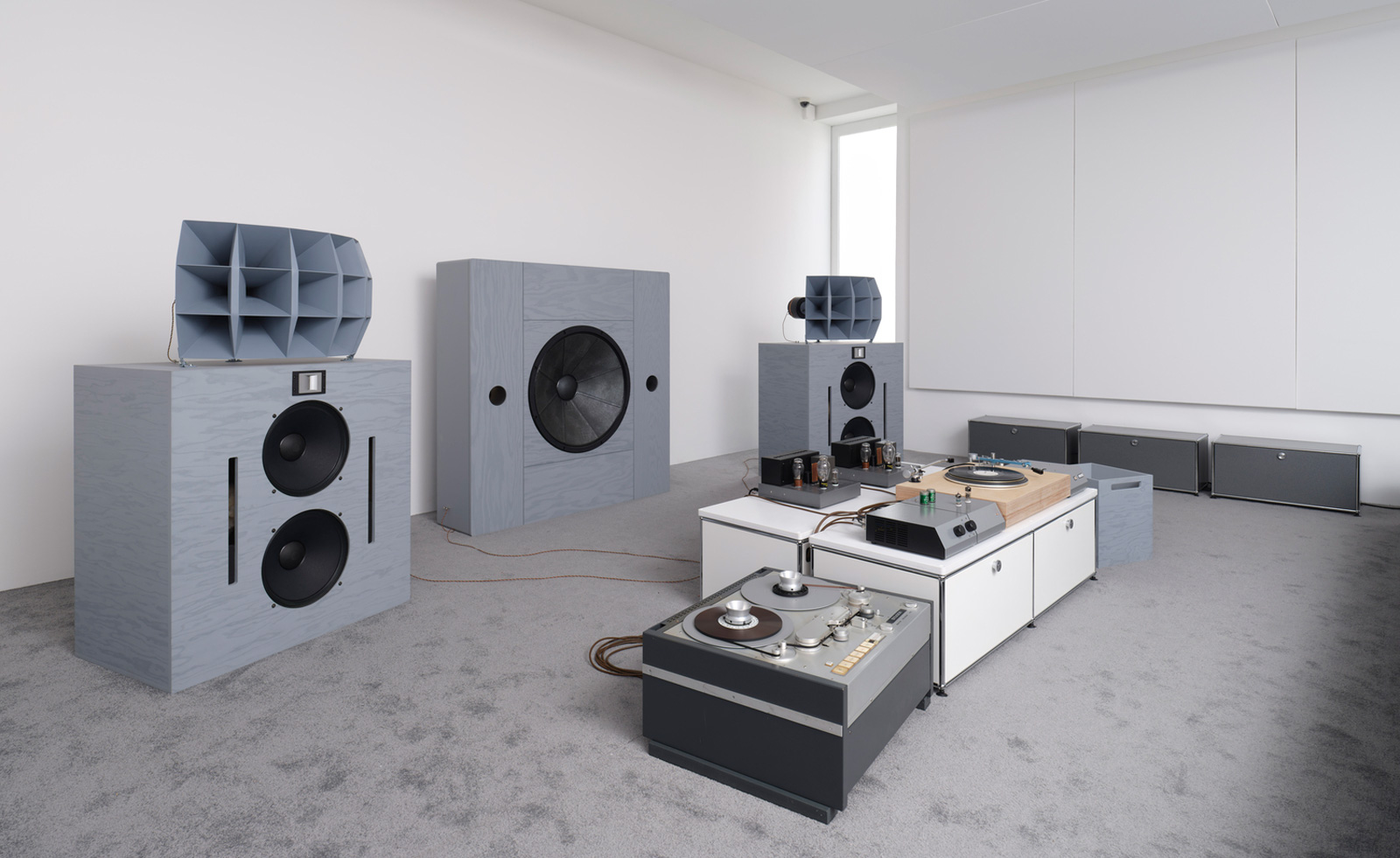 Last chance to see: Devon Turnbull’s ‘HiFi Listening Room Dream No. 1’ at Lisson Gallery, London
Last chance to see: Devon Turnbull’s ‘HiFi Listening Room Dream No. 1’ at Lisson Gallery, LondonDevon Turnbull/OJAS’ handmade sound system matches minimalist aesthetics with a profound audiophonic experience – he tells us more
By Jorinde Croese
-
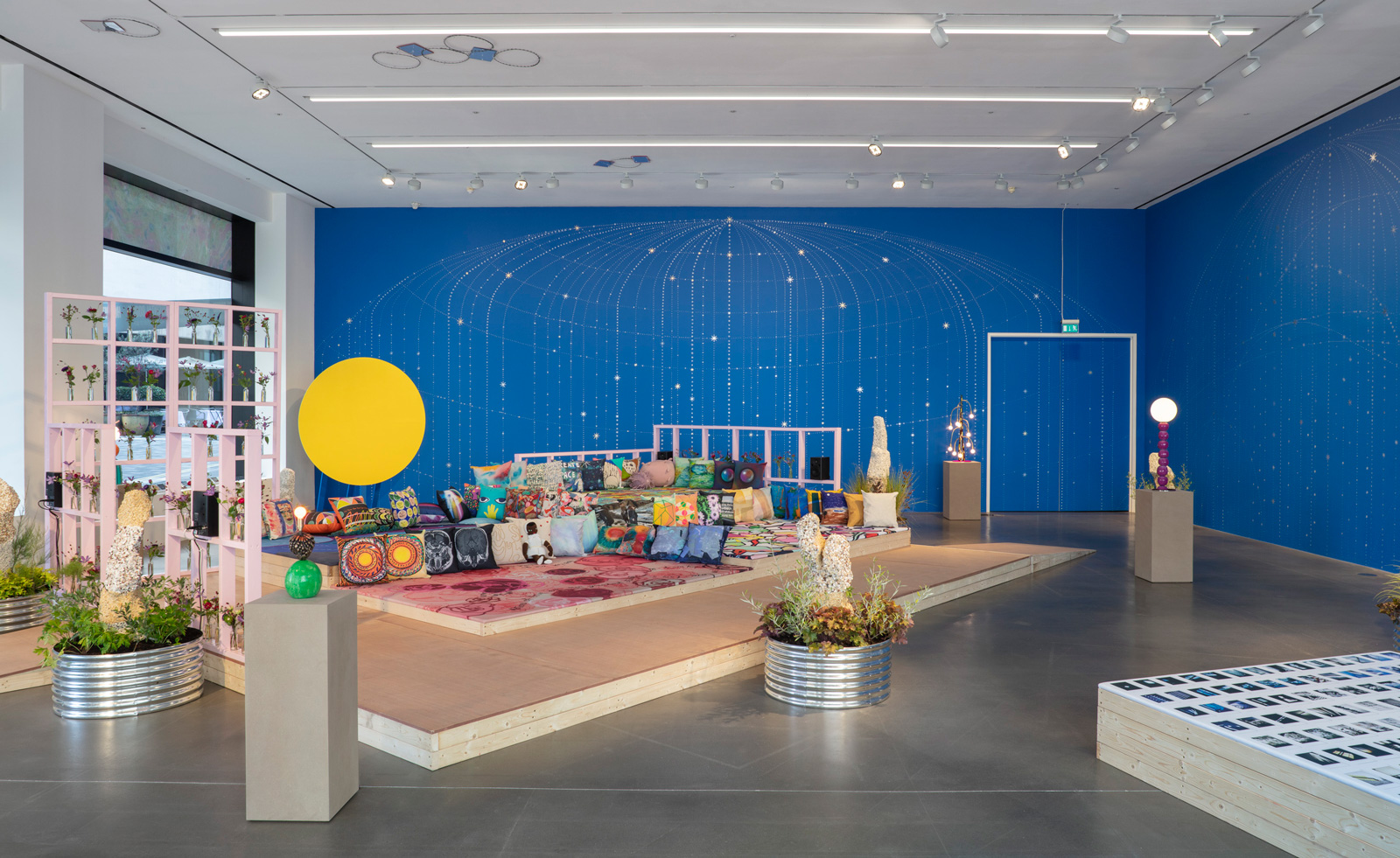 Hospital Rooms and Hauser & Wirth unite for a sensorial London exhibition and auction
Hospital Rooms and Hauser & Wirth unite for a sensorial London exhibition and auctionHospital Rooms and Hauser & Wirth are working together to raise money for arts and mental health charities
By Hannah Silver
-
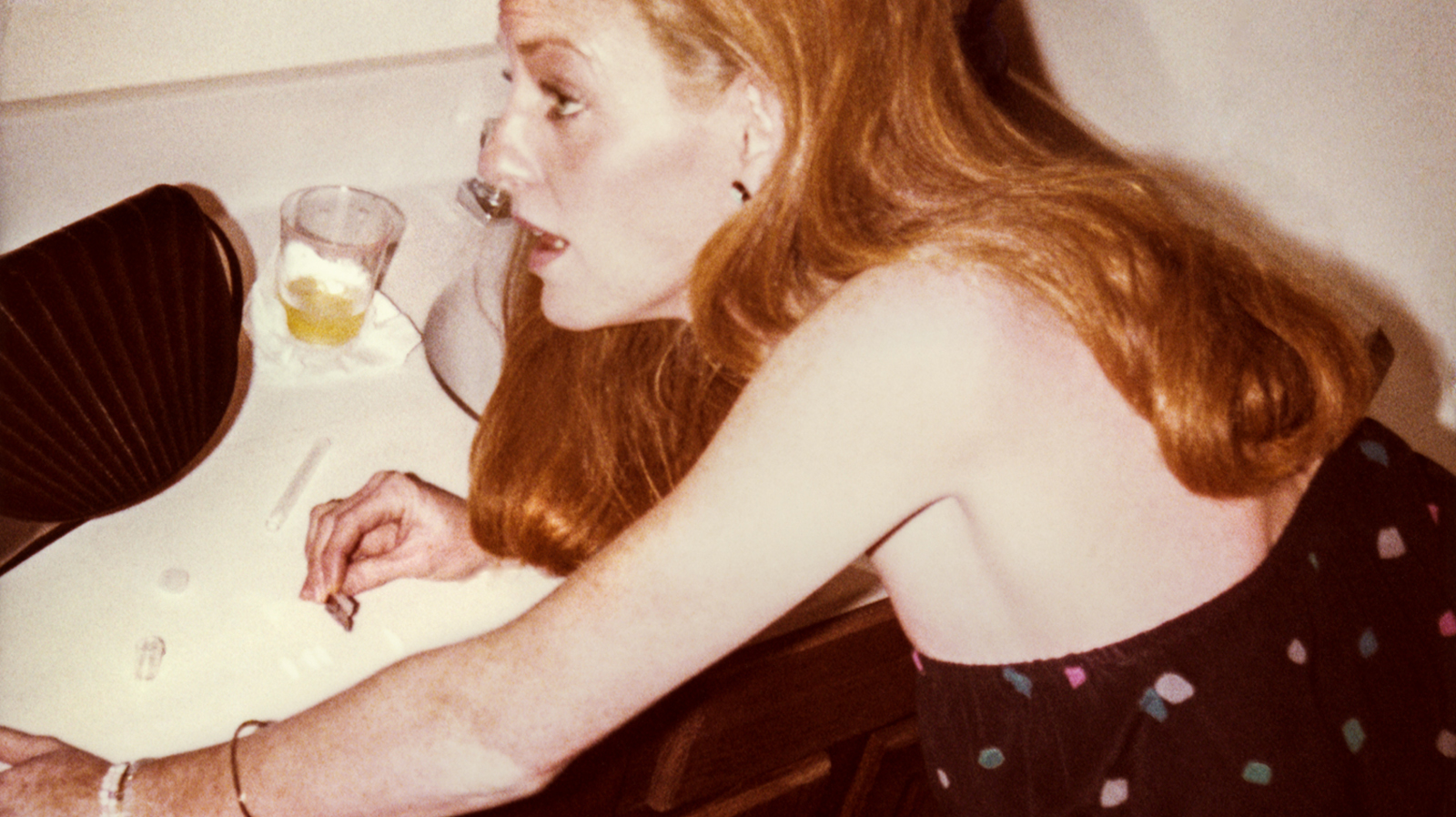 ‘These Americans’: Will Vogt documents the USA’s rich at play
‘These Americans’: Will Vogt documents the USA’s rich at playWill Vogt’s photo book ‘These Americans’ is a deep dive into a world of privilege and excess, spanning 1969 to 1996
By Sophie Gladstone
-
 Brian Eno extends his ambient realms with these environment-altering sculptures
Brian Eno extends his ambient realms with these environment-altering sculpturesBrian Eno exhibits his new light box sculptures in London, alongside a unique speaker and iconic works by the late American light artist Dan Flavin
By Jonathan Bell
-
![The Bagri Foundation Commission: Asim Waqif, वेणु [Venu], 2023. Courtesy of the artist. Photo © Jo Underhill. exterior](https://cdn.mos.cms.futurecdn.net/QgFpUHisSVxoTW6BbkC6nS.jpg) Asim Waqif creates dense bamboo display at the Hayward in London
Asim Waqif creates dense bamboo display at the Hayward in LondonThe Bagri Foundation Commission, Asim Waqif’s वेणु [Venu], opens at the Hayward Gallery in London
By Cleo Roberts-Komireddi